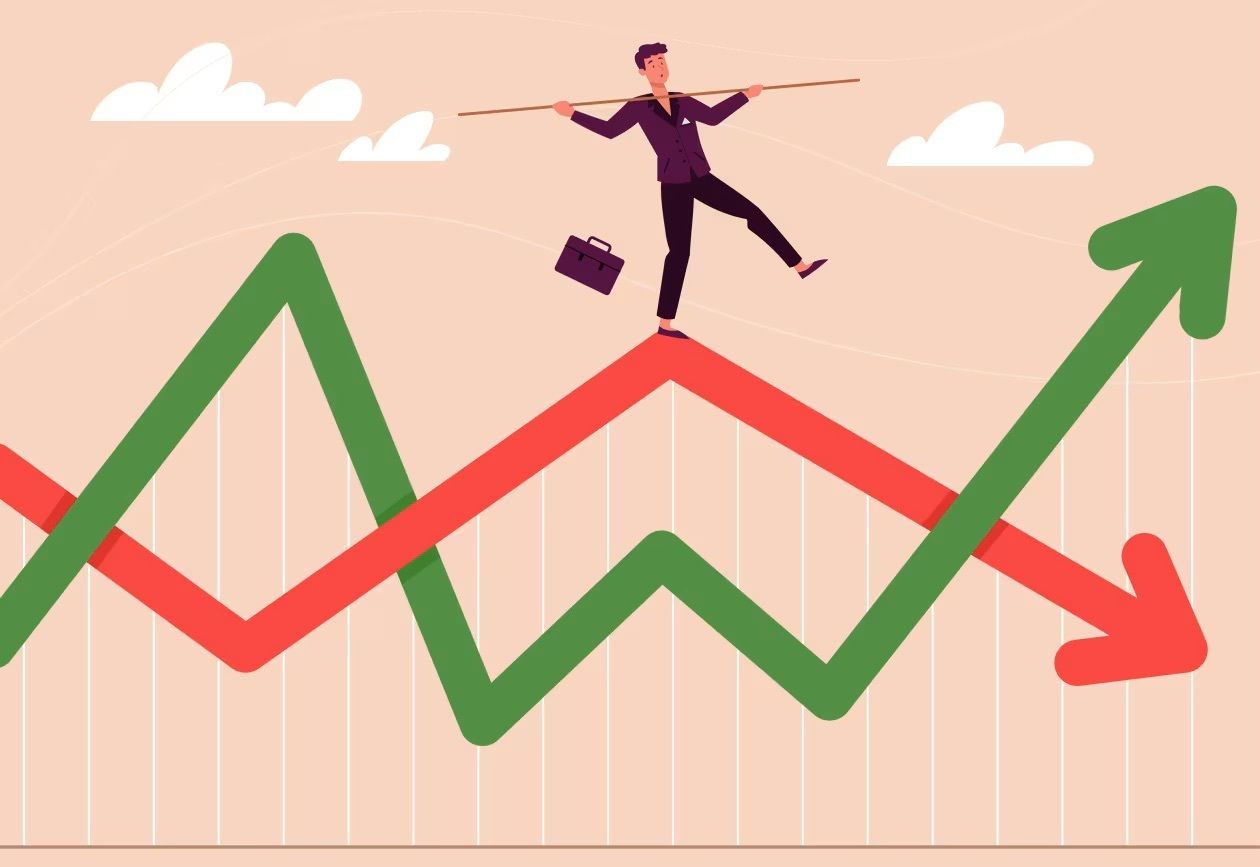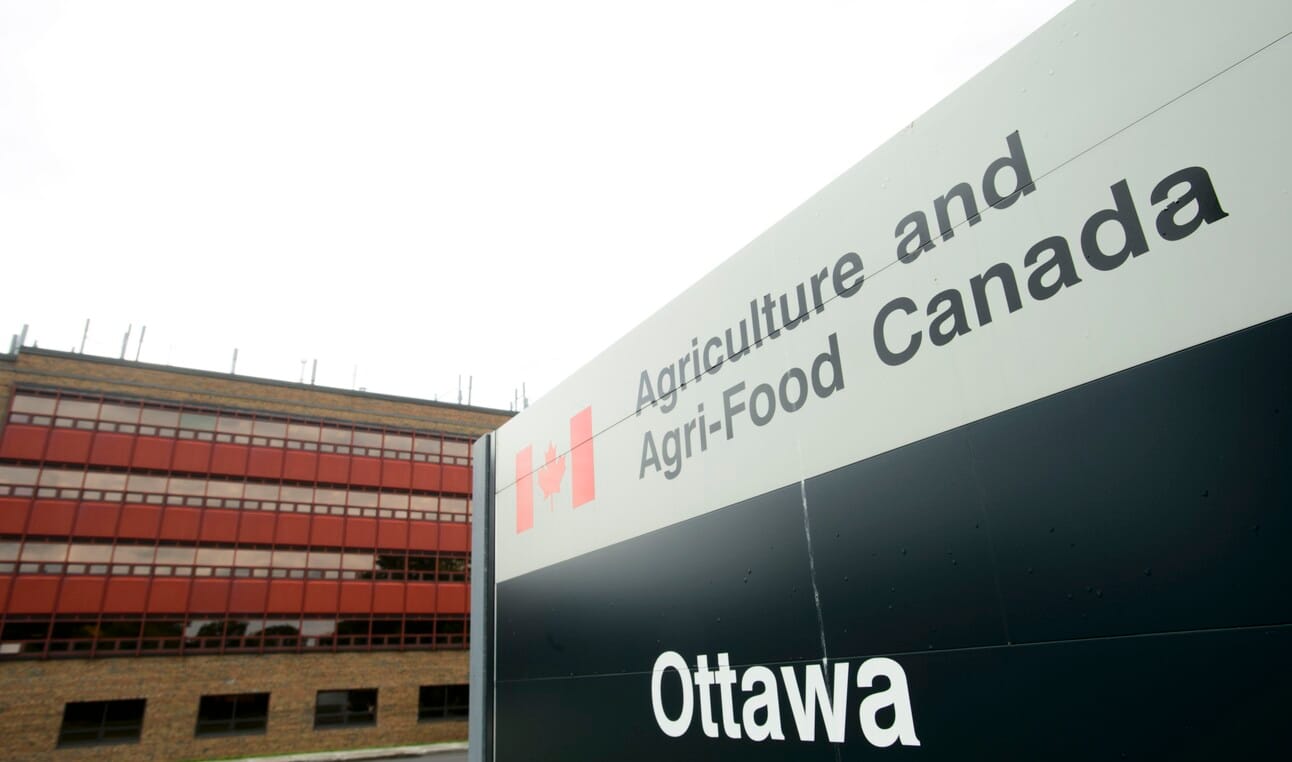- The Daily Yield
- Posts
- 🐘 Elephants can dance
🐘 Elephants can dance
Winter's last stand, market trends, and Bayer CEO's bold moves!

👋 TGIF, am I right? Winter is still very much in season up north, don’t put away the parka yet!
Despite some warmer days in central Canada snow keeps falling in frequent but polite flurries, as if each snowflake is apologizing for the inconvenience. On the bright side, it’s perfect weather for cozying up this weekend with a hot cocoa and a hockey game.
— TDY
📢 Market pulse: Friday snapshot + looking ahead

Whether you're hedging crops, watching your portfolio, or just trying to sound smart at the next coffee shop chat, here’s what’s up (or down) in commodities, stocks, and crypto.
Commodity Movers:
Corn: Down 11.5 cents to $4.82/bushel.
Soybeans: Slight dip of 1.4 cents, now at $10.23/bushel.
Wheat: Dropped 16.25 cents to $5.635/bushel.
Canola: Up 8.8 points, trading at $673.20.
Live Cattle: Increased by $1.50, now at $196.125.
Stock market overview:
S&P 500: Fell 1.6%, marking its fifth decline in six days.
Dow Jones: Decreased by 0.4%.
Nasdaq: Plunged 2.8%, hitting its lowest level since early November.
Currency check:
CAD/USD Exchange Rate: The Canadian dollar is trading at 0.7059 USD.
Crypto corner:
Bitcoin (BTC): Trading at $84,563, up $110.
Ethereum (ETH): At $2,301.59, down $33.02.
Looking ahead into next week:
Grains: Analysts anticipate increased U.S. corn acreage, potentially leading to higher supply and pressure on prices.
Wheat: India's expected hot March could stress wheat crops, possibly tightening global supply and affecting prices.
Stock Market: Continued volatility expected due to economic concerns and diminishing enthusiasm around artificial intelligence technology.
Oil: Potential tightening of global supply following policy changes affecting Venezuelan crude exports.
Cryptocurrency: Bitcoin's stability suggests potential for modest gains, but market remains sensitive to regulatory news.
That's the lowdown. Grain markets will likely remain range-bound, barring any unexpected export shifts or geopolitical surprises. Watch for weather updates in South America—any adverse conditions could spark a reaction next week. Gold is doing well as investors look for safe options. Tech stocks are performing strongly, helping the Nasdaq stay positive. Bitcoin's growth is slowing, but crypto traders are still hopeful for more activity.
🤵♂️ Business action: Bill Anderson is teaching an elephant to dance

Bayer’s CEO Bill Anderson is tearing down the red tape and refocusing the company’s agriculture division on innovation, speed, and farmer needs. Facing stiff competition and declining sales, Anderson is slashing management layers, cutting bureaucracy, and giving more decision-making power to the people actually working with customers. His goal? Make Bayer faster, more efficient, and more innovative in delivering cutting-edge seeds, crop protection, and digital ag solutions.
A major part of this transformation is a €220 million investment in R&D, the company’s biggest in decades. Bayer is betting big on short-stature corn, next-gen soybean traits, biologicals, and AI-powered crop protection, aiming to launch ten blockbuster ag products over the next decade. Meanwhile, its digital ag arm, Climate FieldView, is evolving into an AI-driven agronomic advisor, helping farmers make data-backed decisions faster.
The industry is watching closely—if Anderson’s strategy works, Bayer could set a new standard for agility and innovation in ag inputs. Farmers might benefit from faster product rollouts, better service, and a leaner company that listens more and delays less. However, challenges remain, including regulatory hurdles and competition from Corteva and BASF. One thing is clear: Bayer’s not just trying to stay in the game—it’s looking to change how the game is played.
Key Takeaways for Farmers
Bayer is cutting layers of management to move faster and serve customers better. Less bureaucracy, more action.
A €220M expansion in Monheim, Germany will fuel next-gen seed traits, biologicals, and AI-powered farming tools.
Bayer is targeting ten blockbuster ag products in the next decade, including short-stature corn and gene-edited crops.
A More Competitive Industry? If Bayer’s strategy succeeds, competitors like Corteva and BASF may follow, pushing more innovation and potentially better pricing.
What it means for you: Farmers could see faster response times, better crop solutions, and a more efficient Bayer. This transformation could bring big changes to the field—but execution will be key.
📡 Ag-tech spotlight: Tech meets ag-finance, it's a game changer.

Presented by FarmersEdge.
In the world of agriculture, making money is just as important as growing food. That’s why Farmers Edge, a powerhouse in agricultural technology, has teamed up with Conduit, an online financing platform, to shake things up. Together, they built a custom online storefront in just six weeks, with Farmers Edge providing the back-end tech muscle to keep it running.
This isn’t just another "ag platform"—it’s a digital marketplace helping farmers secure financing so they can invest in what really matters: more land, better equipment, and higher-yield crops.
What’s the Big Deal?
Farmers Edge brings the tech: With 20+ years of agronomic experience, $100M in R&D, and over 100 in-house experts, they’re not just tossing in some code and calling it a day. This is tailored technology to help agribusinesses operate smarter.
Conduit brings the finance: The platform connects farmers with lenders, offering customized loan solutions to help them scale up their operations.
Faster, smarter financing: Need funding to grab that new precision sprayer? Conduit’s platform aims to make getting a loan as simple as ordering parts online.
Why this matters for farmers & agribusinesses?
Traditional ag financing is often slow and complicated, but Conduit’s platform simplifies the process, providing farmers with quicker access to capital. This allows them to focus on expanding operations and improving yields. Additionally, Farmers Edge enhances decision-making by integrating real-time agronomic data, helping both lenders and farmers make smarter financial choices. This ensures that funding is strategic and sustainable, tailored to actual field conditions and market trends.
What’s Next?
Farmers Edge isn’t stopping at Conduit—they’re looking to scale this kind of tech support across multiple areas of ag-business.
Expect more automation, AI-driven loan processing, and deeper integration with farm management software in the near future.
🏛️ Industry & policy news: Canadian farmers adjust seeding plans for 2025-2026

What’s changing & why it matters…
As the 2025-2026 planting season approaches, Canadian farmers are once again playing the ultimate game of “Crop Tetris”—carefully slotting in wheat, canola, and soybeans based on market trends, input costs, and global demand. According to Agriculture and Agri-Food Canada’s latest projections, some fields are getting a makeover, with wheat stealing the spotlight and oilseeds taking a bit of a backseat. Let’s break down what’s shifting and why it matters.
The big shift: More wheat, less oilseeds
Wheat acreage is expected to increase by 2%, reflecting strong global demand and favorable price trends. This shift comes as key buyers—such as China and Indonesia—continue to rely on Canadian wheat for their food security.
Canola and soybean acreage is projected to decline by 5%, mainly due to high input costs (fertilizer, herbicides) and weaker export demand. Canola farmers are especially feeling the squeeze, as uncertainties in global vegetable oil markets weigh on profitability.
Barley and oats remain stable, with only minor adjustments in seeding intentions as feed demand holds steady in both domestic and export markets.
Why Are Farmers Making These Changes?
Farmers are keeping a close eye on fertilizer prices, which remain elevated despite some relief from last year’s highs. Wheat, requiring less nitrogen than canola, is a more attractive option. Not to mention China’s ongoing anti-dumping probe into Canadian canola adding to the uncertainty.
After consecutive years of heavy oilseed planting, many farmers are opting to rotate in more cereals to preserve soil health and reduce disease pressure.
What does this mean for farmers & agribusinesses?
For grain growers: Now is the time to lock in wheat contracts where possible, as demand remains solid. Canola growers should closely watch export trends before making final planting decisions.
For agribusinesses: Expect shifts in demand for crop inputs, with a slight downturn in oilseed-related inputs and higher demand for wheat-related products.
For the market: Lower canola acres could tighten supply later in the year, potentially supporting prices down the line. Meanwhile, more wheat acres mean farmers should prepare for potential price softening if global production increases.
This year’s seeding plans reflect the realities of an evolving ag market. Farmers are adjusting to cost pressures, trade concerns, and agronomic needs, ensuring that their 2025-2026 crops align with profitability and sustainability goals.
🧭 Ag-bites bulletin: Quick-hit ag & world news
China's 'Hog Hotels': High-rise pig farms raising eyebrows — In a bid to meet pork demand, China has introduced towering pig farms, with the largest spanning 26 stories and housing 1.2 million pigs annually. While tech-savvy, these 'hog hotels' have animal rights activists squealing. [Read more]
Made in Canada? These Canadian goods will make Americans regret their tariffs — With Canada on the brink of a trade war with the United States over proposed tariffs, millions of Canadians are fighting back by buying locally. To help Canadians with their patriotic buying blitz, Postmedia journalists scoured the country for some of the coolest — and surprising — Canada-made products. Sorry (not sorry) to our American friends who may soon be paying more for them. [Read more]
Europe ditches Russian fertilizers for homegrown manure — Turning waste into wealth, the EU plans to replace Russian fertilizers with locally produced manure-based alternatives. This eco-friendly move aims to cut costs and reduce reliance on imports, proving that one farmer's trash is another's treasure. [Read more]
Mystery fever in Congo? Bat-related illness claims lives — A mysterious hemorrhagic fever, possibly linked to bats, has emerged in the Democratic Republic of Congo, resulting in over 1,000 infections and 60 deaths. With severe symptoms and rapid progression, health authorities are racing to identify the culprit. [Read more]
SPREAD THE YIELD
🫵 Don’t keep the good stuff to yourself! Share this newsletter with fellow farmers, students, insiders, investors, and anyone who loves staying ahead of the curve.
The more we grow, the better we get, just like a well-fertilized crop! 📈
🧩 Brain activator: Ag puzzle of the week
A farmer needs to take a fox, a chicken, and a bag of grain across a river. He has a small boat that can only carry himself and one item at a time.
If left alone together:
The fox will eat the chicken 🦊🍗
The chicken will eat the grain 🐔🌾
How does the farmer get everything across the river safely?
😁 Fri-yay ag meme:

🤯 Answer:
Take the chicken cross first and leave it on the other side.
Go back alone to the starting side.
Take the fox across next, but bring the chicken back with him to the starting side.
Drop the chicken off at the starting side, then take the bag of grain across.
Go back alone one last time, pick up the chicken, and bring it across.
Reply